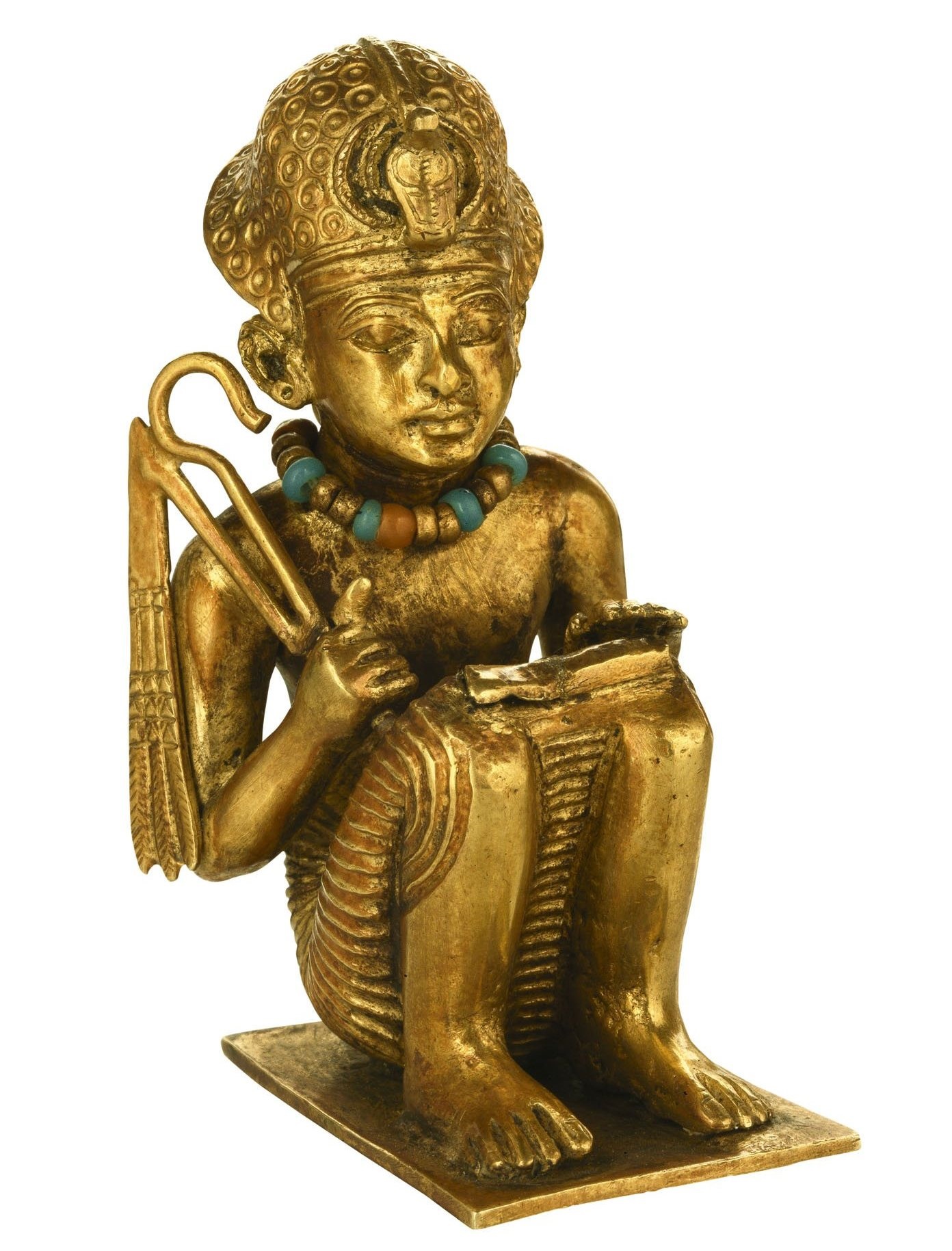Is this a precious memento of the grandfather that Tutankhamun never knew?
This wonderful, solid gold pendant - just over 5 cm high - was buried with King Tutankhamun. Many believe it represents Amenhotep III, Tutankhamun's late grandfather, whose shadow must have loomed large in Thebes. Others aren't so sure.
Let's explore another unsolved mystery from Tutankhamun's tomb.
Tutankhamun never met his grandparents. KingAmenhotep III and Queen Tiye, the parents of the 'renegade' pharaoh Akhenaten, died around five years before young Tutankhamun was born.
When he was interred in his pokey little tomb in the Valley of the Kings, Tutankhamun was accompanied by a solid gold pendant of a squatting king, strung on a heavy, woven gold chain.
The figure wears the khepresh, or Blue Crown and holds a sceptre and flail, the insignia of an Egyptian pharaoh. The king's feet are bare and around his neck is a string of tiny coloured beads. Amazingly all of this detail was packed into a tiny statuette just over 5.5 centimetres high.
Howard Carter felt the figure represented Amenhotep III, and classified it as an heirloom from his famous grandfather.
At the time of Tutankhamun's reign, Amenhotep's vast, glittering memorial temple, guarded by what we now call the Colossi of Memnon, was even grander than the great Temple of Amun at Karnak. It would make sense that those stocking his tomb would want to associate Tutankhamun with his revered grandfather - especially as they tried to distance the young king from his disgraced father.
The pendant was found inside a set of tiny nested coffins, together with an even smaller coffin inscribed with the name of Queen Tiye. Inside was a lock of his grandmother's hair. Carter figured that the golden figure and the lock of hair were buried with Tutankhamun in remembrance of his grandparents.
Whilst the hair may indeed prove to be Queen Tiye's, there is nothing to suggest, other than its context in the tomb, that the pendant represents anyone but Tutankhamun himself. The inscriptions on the nested coffins in which it was found mention only Tutankhamun, and, tellingly, the figure's earlobes are pierced. Although earrings were popular among women and young princes, Amenhotep III was never depicted wearing them. In contrast, his successors Akhenaten, Tutankhamun, and eventually the Ramesside kings were shown with pierced ears.
Most royal tombs are overwhelmingly concerned with the king's successful passage into the afterlife and provide precious little detail about the earthly life of the king. Tutankhamun's tomb was no different; the burial chamber decorations and the funerary goods crammed into the tiny rooms were designed to magically protect the king and provide him with some home comforts for eternity.
Our sentimental sides would like to believe that the little golden statue was a tender memento of an esteemed grandfather, it is more likely that it portrays Tutankhamun for some unknown, ritual purpose.
Just another mystery to add to the pile.
The little golden pendant is today in the collection of the Egyptian Museum in Cairo (JE 60702).
